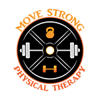Why Your Hip Mobility Isn’t Improving Part II
Hip mobility is key for hip, knee and low back health. It is also key for athletic performance as well as performance in the gym. Limited hip mobility can be a contributing factor for low back and knee pain as well as limitations in your performance for certain lifts such as squats and deadlifts.
Far too often, we hear, “I stretch and stretch” or “I have been doing my hip mobility drills, but it isn’t improving.”
Make sure to check out Part I as to why you may not be seeing an improvement in your hip mobility.
Here is another reason why!
1. Soft Tissue Quality
This point has been belabored time and time again about foam rolling, self-myofascial release, etc.
Have you been using a foam roller or lacrosse ball to the back of your hips and not seen an improvement in your hip mobility?
Well, there are other muscles that can limited hip internal and hip external rotation.
Those muscles include your adductors as well as your gluteus medius and minimus.


Both of these groups of muscles can limit hip external rotation and the adductors can limit both hip internal and hip external rotation, depending on which adductor you are referring to.
If you have been performing self-myofascial release to the muscles on the back of your hip and have not seen a change, try performing self-myofascial release to your adductors and your glute medius/minimus.
Perform for 10-15 seconds per area.
Then follow it up with some mobility drills consisting of:
Quadruped Adductor Rockbacks
Key Points:
-5-8 reps.
-Maintain a neutral lumbar spine.
-Stretch should be felt in the adductor muscle group.
Key Points:
-Hold moderately heavy kettlebell against your chest.
-Sit back towards foot/ankle.
-Maintain a neutral spine.
-Stretch should be felt in adductor group.
Give these two areas a try if you are not seeing an improvement in your hip mobility. Also, be make sure to check our PART I and keep your eyes peeled for PART III of this series.
Tags:

September 11, 2018


